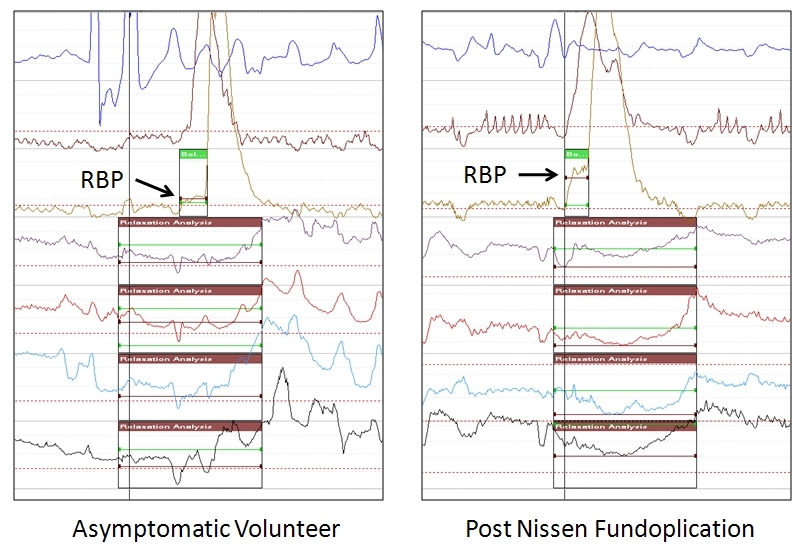Ramp Bolus Pressure: a Determinant for Tailoring the Degree of the Fundoplication
Shahin Ayazi*, Abraham Nisim, Joerg Zehetner, Kimbely S. Grant, Gaurav Sharma, Arzu Oezcelik, Daniel S. OH, John C. Lipham, Steven R. Demeester, Jeffrey a. Hagen, Tom R. Demeester
Surgery, University of Southern California, Los Angeles, CA
Introduction: Traditionally, a contraction amplitude above 30 mmHg in the distal esophagus was used as a threshold for performing a 360° fundoplication. Recently, the relevance of esophageal body contraction amplitudes in selecting patients for a Nissen fundoplication has been questioned. We hypothesize that the ramp bolus pressure (RBP) may be a better determinant of the need to tailor the type of fundoplication. The aim of this study was to determine normal values for the RBP in asymptomatic subjects and in patients before and after a Nissen fundoplication.Methods: The ramp bolus pressure (RBP) was determined by measuring the mean pressure preceding the upstroke of the contraction wave 5cm above the lower esophageal sphincter (LES) (Figure). We measured the RBP in 53 asymptomatic volunteers and 37 patients with reflux symptoms before and after a Nissen fundoplication. All of the reflux patients had an excellent outcome and none had dysphagia at the time of postoperative evaluation. Results: A RBP was present in 97% of normal subjects and 100% of patients. The mean (SD) amplitude of the RBP in normal subjects was 6.8 (3.7) mmHg. The RBP in reflux patients was significantly lower than that in normal subjects [3.6 (7.0) mmHg, p<0.003]. After Nissen fundoplication, the RBP increased to 12.0 (3.2) mmHg and was significantly greater than the preoperative values (p<0.0001). The 95th percentile value for RBP in normal subjects was 10.4 mmHg and after Nissen fundoplication was 20.0 mmHg.Conclusion: The ramp bolus pressure is a frequent manometric finding that indicates the degree of outflow resistance in the LES region. This amplitude increases after a Nissen Fundoplication. These findings suggest that a contraction amplitude above 20mmHg is necessary to overcome the resistance of a Nissen fundoplication and this threshold may be a better determinant of the need to tailor the type of fundoplication performed.
Back to 2011 Program



